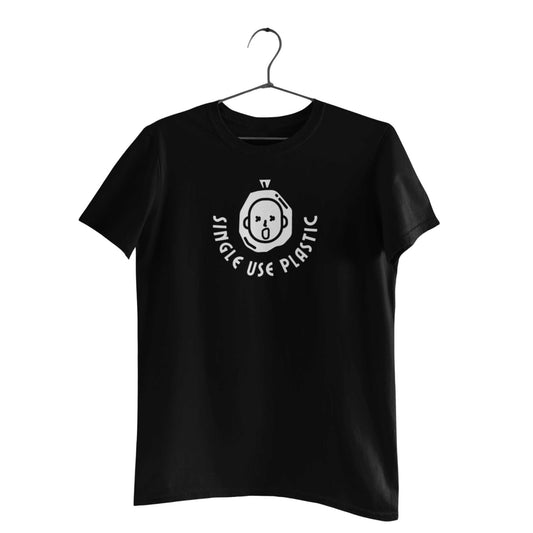The Alarming Rise of Cancer in Younger Populations
The recent news of Kate Middleton's cancer diagnosis sent a wake up call (and perhaps some self reflection? shame? at our unwarranted entitlement to personal details of the famous) through the public, bringing to light an alarming trend; the sharp increase in early onset cancer. According to a study published in Nature Reviews Clinical Oncology, there has been an 80% increase (1) in the incidence of certain cancers in young adults over the past few decades.
Let that sink in.
We Are The Age Of Plastic
The first place to look for causes for this increase in early onset of cancer would be lifestyle and environmental changes that have occurred in the last 50 years. This would include our food aisles filled with processed foods, the widespread use of chemicals in household products and personal care items, exposure to pollutants, a more sedentary lifestyle and the introduction of microplastics into our environment.
Today I am focused on microplastics because I believe that public awareness and making minor adjustments in our daily plastic use can significantly reduce their most harmful impacts. Basically, it's low hanging fruit that doesn't take too much effort on our part to change. When you become aware of how damaging microplastics are to your health (2) perhaps you will think twice before taking a sip from a plastic bottle or eating your steaming hot to-go curry out of one of these plastic containers.

Two of the biggest sources of microplastics in our bodies are from the air we breath (3) and consuming beverages and food from plastics (4).
How Will They See Us In The Future?
Would we knowingly opt to use a product one time and throw it away if we knew that it stayed indefinitely in our surroundings, gradually making its way into our bodies and causing unknown harm to both our health and the environment? (5) I doubt it!
Wouldn't it make more sense to reserve the use of such a substance for products that are truly necessary or can be used over and over again? And when the time comes to dispose of such a material would we not want to do it in a way that stops it from leeching into everything around us?
In a century's time, will it be talked about how we once ventured to stores where we segregated various vegetables into individual plastic bags, purchased processed edibles enshrined in plastic, and received shipments enveloped in plastic wrappings?
Will they talk about how we used to microwave meals in plastic containers and unboxed everyday items, as humble as a toothbrush or a pill bottle, cushioned amidst tiny plastic air bubbles, all housed within yet another layer of plastic the same way we talk about how previous generations painted their newborns room with lead paint, built homes using asbestos and applied mercury on wounds?
So why are we still using plastics as single use throw away packaging?
The Unbeatable Convenience of Single-Use Plastics
They are cheap for businesses and consumers when you don't consider the environmental or health costs.
They are lightweight.
They offer a hygienic way to package food and medical devices.
They save consumers from having to clean.
It's An Ingrained Habit
The use of single-use plastics is so integrated into routines to the point where seeking alternatives feels like a needless hassle.
In many places, opting to carry a tote bag or pull out your bamboo straw can be viewed as a hassle or even as weird. When reusable options aren't readily available or visibly used by others then we will lean towards what everyone else is doing.
If there are too many sustainable choices then we might decide to go with what we know. I spent over an hour scanning through ways to pack my lunch and ended up using stainless steel, glass bowls with plastic lids, bamboo cutlery and beeswax to wrap things in.
Considering The Full Life Cycle of Materials. Why Does It Stick Around For So Long?
Molecular Structure
The long-chain polymer molecules in plastics are tightly bound and do not easily break apart. Their synthetic nature means that natural microorganisms, which break down organic matter, cannot easily digest plastics.
Resistance to Sunlight and Weathering
Although plastics can fragment into smaller pieces through photodegradation (a process in which sunlight breaks the bonds in the polymer chains), this process doesn't completely break them down into natural substances. Instead, they disintegrate into smaller fragments, microplastics, which persist in the environment.
Lack of Biological Mechanisms
In the natural decomposition process, microorganisms play a crucial role in breaking down organic materials. However, these microorganisms do not have the biological mechanisms to decompose plastics effectively, leading to the accumulation of plastics in the environment over time.
Note For Hope - Fungi
Although in recent years, researchers have identified several species of fungi that can degrade plastics. These fungi secrete enzymes that can break down the complex polymer chains in plastics into smaller molecules. One of the well-known plastic-eating fungi is Pestalotiopsis microspora (6), which has been found to consume polyurethane, a type of plastic that is typically resistant to degradation.
Chemical Stability
Plastics are chemically stable, meaning they resist reactions with other chemicals in the environment. This stability, combined with their resistance to biological decomposition, makes them highly persistent in the environment.
Presence of Additives
Many plastics contain additives that further increase their resistance to degradation. These additives can make plastics even more resistant to natural decomposition processes, further prolonging their lifespan in the environment.
Slow Physical Breakdown
Even when plastics undergo physical breakdown (e.g., through mechanical forces like waves), this process only fragments the plastics into smaller pieces rather than biologically breaking them down into basic elements or compounds.
Because of these reasons, plastics persist in the environment for a very long time, leading to significant ecological and environmental impacts.
The Rise of Plastic - It was marketing! I hate marketing!
When plastic first entered the scene, it was far from a crowd favorite. It felt inferior, somewhat cheap compared to materials that had stood the test of time. However, marketing wizards saw an avenue to turn the tide. They successfully shifted plastic from a less-than-desirable alternative to a hallmark of convenience and modernity. (7) Suddenly, plastic was everywhere, embodying the onset of a throwaway culture that seemed at odds with its everlasting nature.
The Shocking Truth About Plastic Recycling
It's time to unveil a bitter truth that many of us might not be aware of most of the plastic we think gets recycled actually doesn't (8). Only about 5% of it does. The majority of it embarks on a journey to third-world nations, adding to their plastic crisis and eventually finding a home in our oceans. Consider that it might be better to just throw it in the regular trash so that it ends up in a landfill rather than polluting our waterways.
Facing the Environmental Crisis Head-On
We find ourselves in the midst of a severe environmental crisis, courtesy of plastics. These microplastics have infiltrated every nook and cranny of our planet, silently but steadily eroding the natural balance. The consequences are alarming, with plastic residues found in the marine food chain, wildlife habitats, and even in the human body, crossing barriers once thought to be invincible.
Sustainable Choices
Despite the magnitude of this problem, it's not a cause lost. Each one of us holds the power to make a difference through the small daily choices we make and the conscientious habits we cultivate.
Every day I’m reminded that small actions can make a big difference. That's why I've got a reusable roll up tote bag, a steel water bottle and bamboo utensils with me. And why I'm writing this. To tell you that, yes, we can turn things around, starting with our own daily habits.
United in Purpose: Creating a Cleaner, Healthier World
We all have the opportunity and the responsibility to make a tangible difference.
Start with simple steps: begin noticing the omnipresent plastics in your surroundings, and initiate small but significant changes in your daily habits.
Once you've begun to adapt, take it a step further: educate those around you and encourage them to join you in this crucial shift.
Use Social Media
Hold companies accountable for their use of plastic packaging by publicly calling them out on social media when you witness excessive use. Use the hashtag #plasticpackaging on Instagram and #plasticpollution on X along with the company's name and inquire why they continue to rely on plastic packaging. Praise companies that are using more #SustainablePackaging. Let them know you notice!
But don't stop there. The next step is leveling up even further, forming or joining forces with groups that lobby at the city and state levels, where we can press for the true cost of plastics to be reflected in the price tag.
The importance of individual action cannot be overstated. It all starts with small changes in our daily habits. Every decision to refuse a plastic straw, bring a reusable bag, or support businesses that prioritize sustainability contributes to a larger movement towards reducing plastic waste.
Helpful Suggestion:
Wearing Bitter Threads inspiring shirt of a head suffocating in a plastic bag will certainly spark engaging conversation around this topic.
Footnotes
(1)
(2)
(3)
Microplastics in indoor environment: Sources, mitigation and fate
(4)
A Review of Human Exposure to Microplastics and Insights Into Microplastics as Obesogens
5 Healthy & Sustainable Food Storage Alternatives to Plastic
(5)
Microplastics May Increase Risk for Obesity
Plastics, EDCs & Health: Authoritative Guide
The Minderoo-Monaco Commission on Plastics and Human Health
(6)
Chow Down on a Plastic-Eating Fungus
(7)
How Postwar Ads Got Us Hooked On 'Disposable' Single-Use Plastic
Never gonna give you up: how plastic seduced America
(8)
How the Plastics Industry Is Fighting to Keep Polluting the World
What can we do?
We know single-use plastics are bad. Why can’t we stop using them?
The plastic problem isn't your fault, but you can be part of the solution



